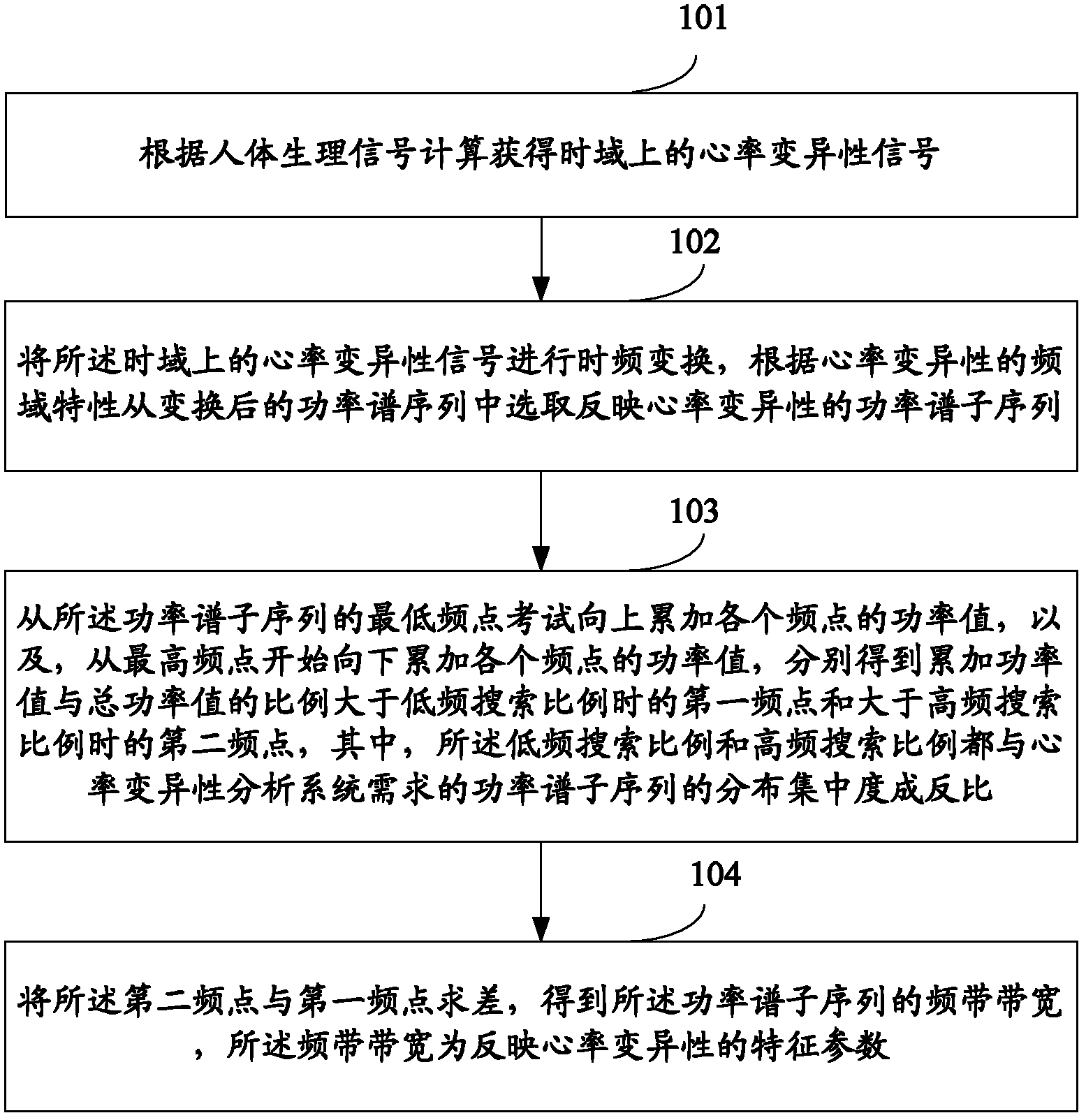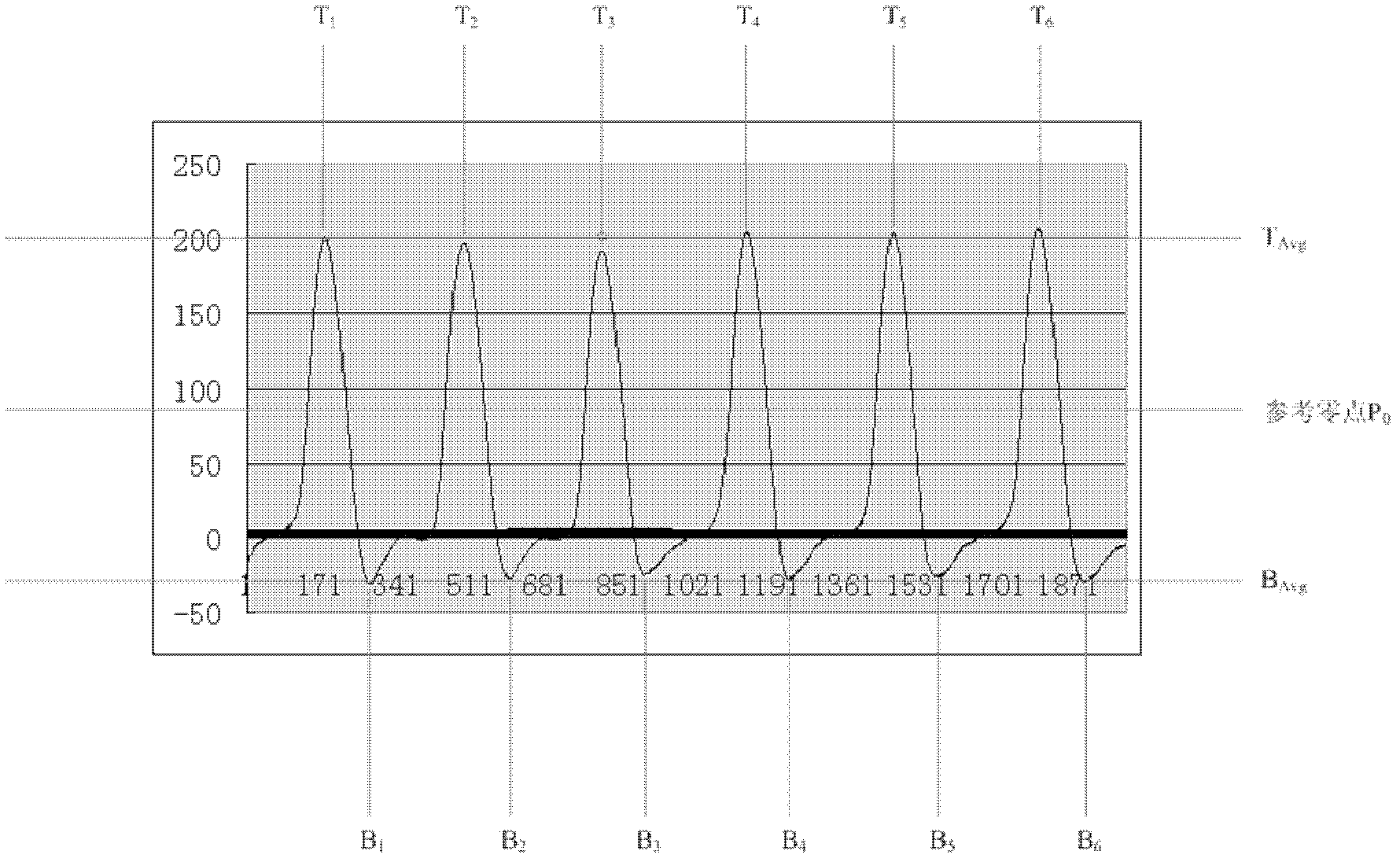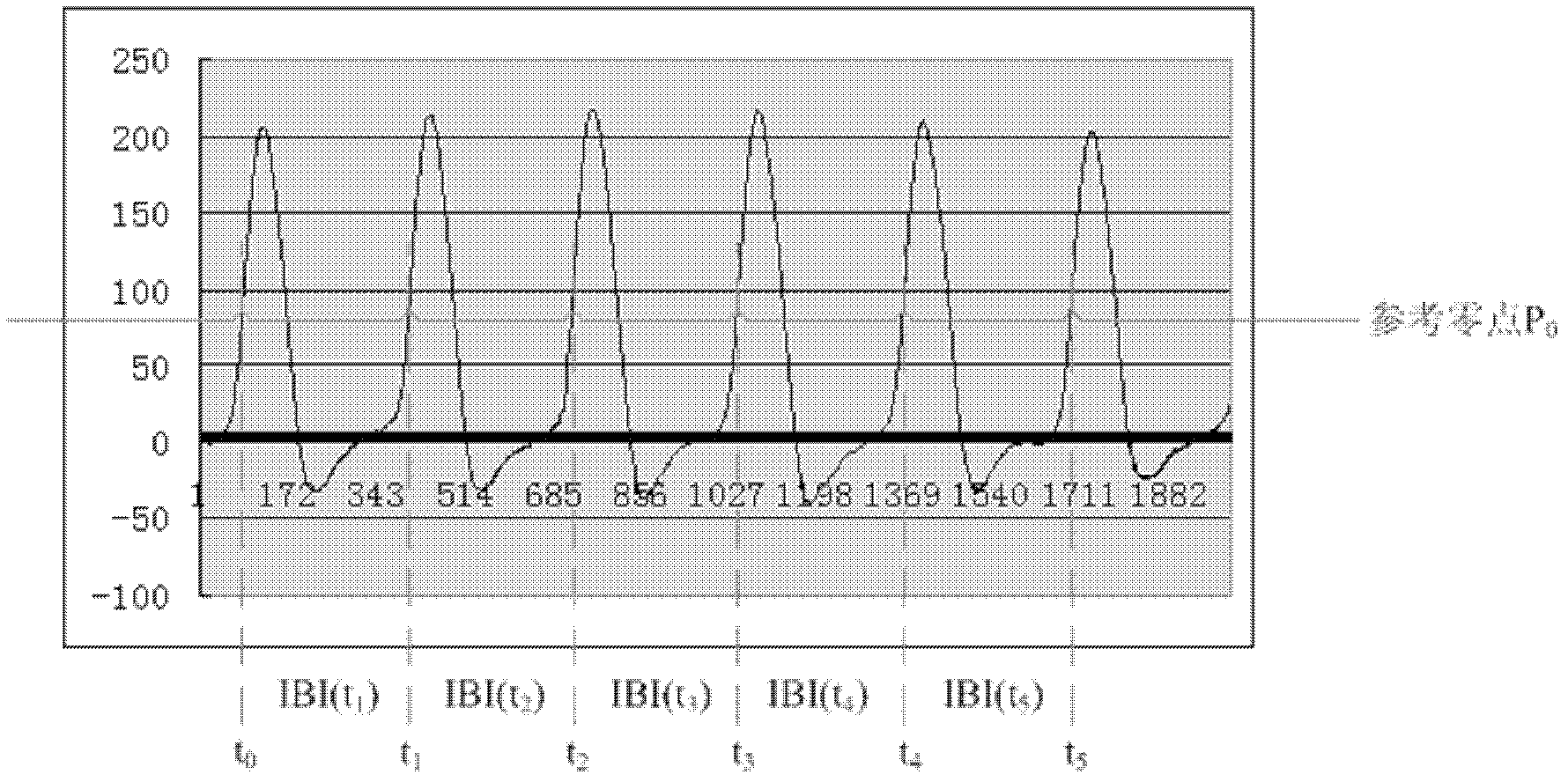Method and device for acquiring heart rate variation characteristic parameter
A technology of heart rate variability and characteristic parameters, applied in the field of signal processing, can solve the problems that characteristic parameters cannot reflect the position relationship of the main peak, and cannot accurately reflect the shape of heart rate variability, and achieve accurate physiological and psychological significance, good metric evaluation. Effect
- Summary
- Abstract
- Description
- Claims
- Application Information
AI Technical Summary
Problems solved by technology
Method used
Image
Examples
Embodiment 1
[0035] see figure 1 , which is a flowchart of an embodiment of a method for obtaining heart rate variability characteristic parameters of the present invention, the method includes the following steps:
[0036] Step 101: Calculate and obtain the heart rate variability signal in the time domain according to the physiological signal of the human body;
[0037] For example, any method in the prior art may be used to collect necessary human physiological signals, and then the heart rate variability signal in the time domain is calculated according to the collected human physiological signals. Wherein, the physiological parameter of the human body may be a pulse wave signal of the human body, and may also be an electrocardiographic signal of the human body.
[0038] For example, the execution process of this step will be described in detail below by taking the pulse wave signal of the human body as an example and obtaining the heart rate variability signal in the time domain from ...
Embodiment 2
[0062] In some cases, the distribution of the power spectrum subsequence is concentrated in the very low frequency (VLF, Very Low Frequency) part. Since the very low frequency part is at the edge of the entire power spectrum subsequence, its concentrated distribution is not a true peak distribution and does not represent heart rate variability. The periodic changes of the form, therefore, the characteristic parameters at this time need to be corrected. The difference between this embodiment and Embodiment 1 lies in: judging whether the distribution of the power spectrum subsequence is concentrated in the extremely low frequency part, and if so, further correcting the dedimensionalized characteristic parameters. see Figure 6 , which is a flow chart of another embodiment of a method for obtaining characteristic parameters of heart rate variability in the present invention. Specifically include the following steps:
[0063] Step 601: Calculate and obtain the heart rate variabi...
Embodiment 3
[0077] The preferred implementation scheme for acquiring characteristic parameters is described in detail below. see Figure 7 , which is a flowchart of an embodiment of a method for obtaining heart rate variability characteristic parameters of the present invention, including the following steps:
[0078] Step 701: Using an infrared photoelectric sensor to collect pulse wave signals from the subject;
[0079] In addition, ECG signals can also be collected from the subject.
[0080] Step 702: Determine the reference zero point of the pulse wave signal;
[0081] For example, collect the pulse wave signal for 5 seconds as a reference signal, and extract several peak points T from the reference signal 1,2,…,n and several valley points B 1,2,…,n , calculate the average T of all peak points Avg and the mean B of all valley points Avg , take T Avg and B Avg The median value (T Avg +B Avg ) / 2 as the reference zero point P for calculating the heartbeat interval 0 .
[0082...
PUM
 Login to View More
Login to View More Abstract
Description
Claims
Application Information
 Login to View More
Login to View More - R&D
- Intellectual Property
- Life Sciences
- Materials
- Tech Scout
- Unparalleled Data Quality
- Higher Quality Content
- 60% Fewer Hallucinations
Browse by: Latest US Patents, China's latest patents, Technical Efficacy Thesaurus, Application Domain, Technology Topic, Popular Technical Reports.
© 2025 PatSnap. All rights reserved.Legal|Privacy policy|Modern Slavery Act Transparency Statement|Sitemap|About US| Contact US: help@patsnap.com



